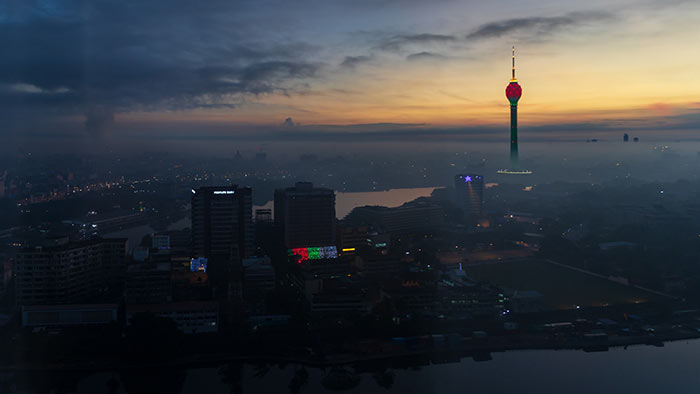Sri Lanka GDP outlook slashed as economy struggles to recover – report

Photo credits: unsplash
Economists sharply cut Sri Lanka’s growth outlook through this year as curbs on imports and still-limited reserves persist even as the International Monetary Fund releases bailout loans and authorities work toward debt restructuring efforts.
The economic contraction is seen more than doubling to 9.9% in the first quarter from the previous estimate of 4.4%, the latest Bloomberg survey of economists showed. Growth is likely to bounce back from the second quarter though at a slower pace of 1% from an estimated 2.9% previously.
For the full year, Sri Lanka’s gross domestic product estimate was revised to 0.7% from 2.7%, the survey showed.
The South Asian nation grappled with its worst economic crisis since independence last year as dollar shortages and shrinking reserves together with an infamous organic fertilizer policy led to crop failures and severe shortages of food and fuel.
People took the streets to protest, eventually forcing a change in leadership as the economy almost came to a halt and inflation surged.
While there are signs of stability with food and fuel imports coming in and the Washington-based lender approving a $3 billion loan, some economists say the current economic situation is nowhere close to pre-pandemic normalcy.
Slower Recovery
Economists see Sri Lanka to go into deeper contraction before bouncing back to growth in 2Q.
“Conditions are still weak but are tilted to the upside,” said Andrew Vogel, an economist at S&P Global.
He said Sri Lanka has very little usable foreign reserves and significant restrictions on imports while a still-ongoing moratorium on external debt payments pending restructuring agreements is keeping conditions uncertain.
Sri Lanka’s double-digit inflation, which is Asia’s fastest, is expected to persist through this year, the Bloomberg survey showed. Consumer prices are seen surging to around 28.8% for second quarter and averaging around 25% this year.
Economists also forecast a cumulative 100 basis point hike in the benchmark rates in the second quarter, and then expect a hold at least till the end of the third quarter before the easing cycle begins.
The Central Bank of Sri Lanka has kept its key rate is at the highest since August 2001 earlier this month to support growth despite price gains remaining stubbornly high at 50.3% in March. The monetary authority sees headline inflation slowing to single-digit levels by end-2023.
(Bloomberg)
Latest Headlines in Sri Lanka
- Sri Lanka President honors Navy, calls for unity in nation-building December 14, 2025
- Sri Lanka President pledges protection of fishermen’s rights amid Mannar crisis December 14, 2025
- Man arrested at Katunayake Airport with over 2 Kg of heroin December 14, 2025
- Sri Lankan President orders swift livelihood restoration for disaster-hit communities December 13, 2025
- Sri Lanka receives over USD 7 Billion in remittances in 2025 December 13, 2025


